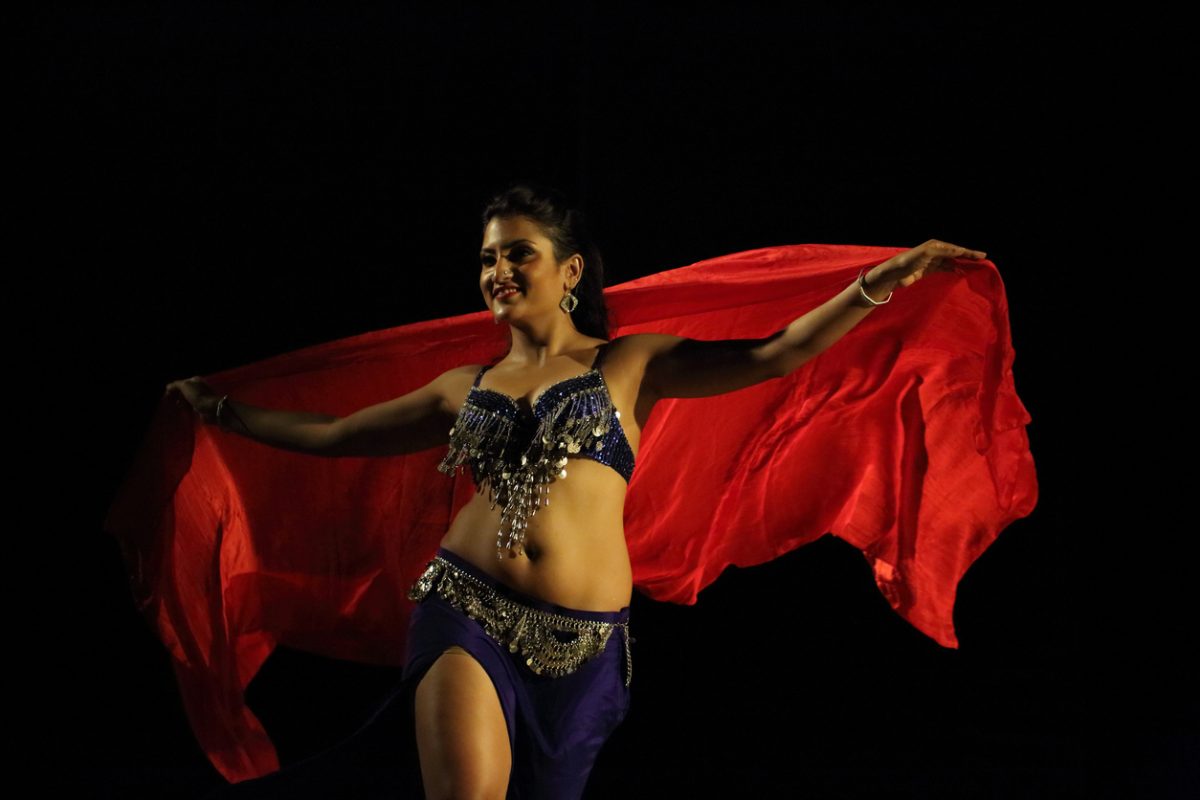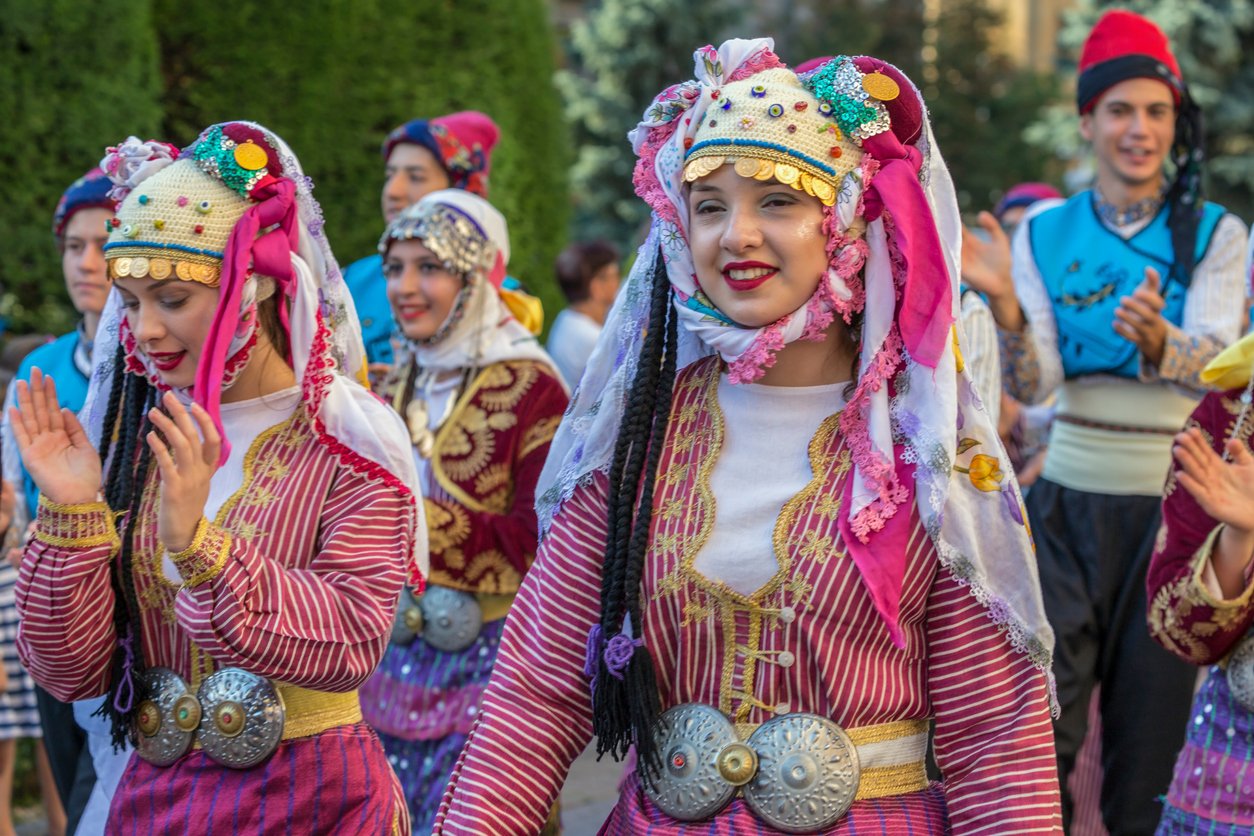Music and dance in Turkey are expression of its most popular culture and folklore.sometimes with roots going back many centuries.
In other cases, they are a reflection of the tastes of the new generations and, given the large size of the country and its strategic position between East and West, it is an original mix of styles that generates trends in neighboring countries.
In this page we explain some of the most remarkable aspects of the local music and dances, in case any of its rhythms and shows enriches your trip to Turkey.
If we stick to folklore, the most unique and interesting dance from Turkey is perhaps the samaperformed by the whirling dervishesalso called mevlevies.
Se trata de un orden de derviches (sufíes ascéticos) que tienen como maestro al poet Jalal al-Din Muhammad Rumi, from the XIII century and with great repercussion in the Muslim world.
In the sama, or sema, the whirling dervishes perform a spectacular group dance in which they spinning on themselves with outstretched arms, in a gesture and movement that symbolizes the ascent of their spirit towards the truth.
They do so to the sound of flutes, drums and other typically Turkish instruments, such as the kamanché (a kind of violin) or the saz (a version of the lute).
The sama also has a meditative characterDuring the show, verses from the Koran are chanted, and the dancers reach a kind of mystical ecstasy.
Their attire is also unmistakable: these dancers (men only) are dressed in a long white tunic and a long white tunic symbolizing purity, with a colorful flight due to the effect of the turns, thus adopting a conical shape full of energy.
On the head, hats also conical symbolizing their tombstones, perhaps a reference to the domes of the same shape that crown the mosque-museums of the Seljuks, the Turkic empire in which this Turkish dance arose.
The best city to enjoy these spectacles is perhaps Konyawhere the epicenter of this order of whirling dervishes is located.
But you will also easily find shows in places such as Bursa, Cappadocia and Istanbul.
Además, tanto en Konya como en Antalya you will find museums dedicated to this dance from Turkey, which has also been exported to other countries dominated by the Ottoman Empire in the past, such as Egypt.

If the whirling dervishes are a dance from Turkey performed only by men, belly dancing is performed almost exclusively by women. women.
Pero su carácter es completamente distinto: a diferencia de la sama, que tiene un carácter religioso y místico, la danza del vientre tiene un component of sensuality that cannot be denied.
This dance, which in Turkey is known as gobek danshas uncertain origins, and may even date back to Ancient Egypt.
But it had its greatest diffusion in the Near East several centuries ago, probably linked to slave and concubine shows in the harems.
Y no fue hasta el twentieth century when the dancers of this dance reached the professionalization professionalization.
The show is starred by a dancer, and sometimes they form a group.
Her clothing is based on a long mermaid-type skirt with side slits and abundant glitter, or else a hip belt (a kind of belt) and bloomers.
In the upper part they are dressed with a top and on the arms, a veil that move to the sound of the dance creating striking figures reminiscent, for example, the wings of a bird.
On the other hand, the belly is left in the airHence, this dance is also known as belly dance, as this part of the body acquires a great prominence.
In addition, sequins and dangling coins give glitter and even a characteristic sound while the dancer moves.
All this attire underlines and enhances the movements of the dance, in which the dancer associates or dissociates parts of the body to the sound of the rhythm, which in Turkey tends to be joyful and lively. joy and vivacitySometimes with energetic movements of the hips, belly and chest, which are compensated with other slower and more fluid passages.
As this is a world-famous dance that is closely associated with Turkish culture, there are many places where you can watch the numerous places where you can witness a show of this dance. of this type.
In Istanbul, of course, but also in all other tourist destinations, often in restaurants that have their own stage and in whose large hall dinner is also served.

In addition to these two dances of Turkey, there are other lesser-known but very authentic folk dances and expressions that can be seen at festivals, private performances and important celebrations in the country.
One of the most striking is the halaytypical of many parts of Anatolia, including those with a Kurdish majority, and is very common at Turkish weddings. in Turkish weddings.
Los bailarines, normalmente mujeres, se agarran de la mano o de los hombros, formando un círculo o una línea, agitando el primero y el último un pañuelo o velo, mientras todos siguen el mismo ritmo, que comienza lento y termina más animado.
Este baile tiene a menudo un carácter espontáneo y popular, sinónimo de fiesta y celebración.
The horon is another dance from Turkey associated with parties and usually has a spontaneous character.
It is also danced in a group and holding hands, although in this case with much more energetic jumpsin the style of the Cossacks.
It is not by chance, in fact, that this dance is only typical in the region of the Black Sea.
Quite different is the fasiloften referred to as Turkish classical music or Ottoman Ottoman music because it has its roots in that period.
It is a refined genre which combines local elements with others of Arabic and Persian tradition.
Among its most striking aspects, the use of local instruments, such as the oud or Arabic oud, the kanun (a kind of zither), the darbuka (a cup drum that is beaten with the hand) or the ney (a reed flute).
These rhythms are often played by members of the gypsy ethnic group in taverns.
But chances are that during your trip to Turkey you will listen, almost without looking for it, to current music, especially to what is known as Turkish popcatchy and lively music, with clearly oriental rhythms and easily danceable, because the Turkish public is characterized precisely by a certain uninhibition when it comes to moving their bodies.
Some artists and groups are true mass phenomena, both in Turkey and in neighboring countries, with a success that the new digital platforms have amplified by their ease of dissemination.
Among women, the real queen is Sezen Aksuveteran artist who has been at the top for several decades.
And among men, that place is occupied by Tarkana best-seller that even had some penetration in the European market.
Other artists, on the other hand, prefer to and experiment with electronic rhythms, such as Mercan Dedesuch as Mercan Dede, while other bands are influenced to a greater extent by the rock international.
In addition, the rap has also caught on among urban youth, giving rise to an original incisive style in the Turkish language.